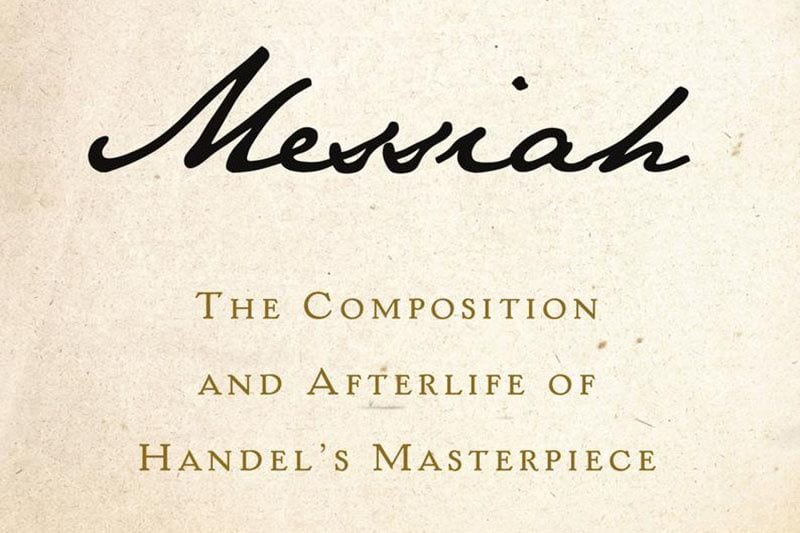
When I was in the 12th grade, I told my father that my choir was going to perform four selections from Handel’s “Messiah”. His response wasn’t an encouraging one: “Every year, more and more people perform ‘Messiah’. And every year it gets more overdone.” A piece of classical music isn’t exactly like a steak or a fried egg, where one can quantify just how “overdone” something is, but I received his point loud and clear: “Messiah” has been thoroughly driven into the ground and then some. It’s been taken for granted for so long, both as a piece of religious music and as a staple of the Baroque era, that it’s very difficult for us to imagine a time when Handel’s seminal work was new and slightly revolutionary. But author Jonathan Keates’ brief book Messiah: The Composition and Afterlife of Handel’s Masterpiece tries to put readers into that head-space. He places the oratorio in question under a historical microscope where we can all marvel at its genesis and ponder over just how such an ambitious large-scale work became a mainstay.
Messiah can be considered either a short book or a long essay. From either angle, Keates gets to the heart of the matter fairly quickly. A biographical take on the composer himself is given a cursory swipe — there’s a little bit about his musical training here, even less about his personal life over there, and no juicy stories of how he threatened to drop one of his sopranos out of an open window because she wouldn’t cooperate. The groundwork where Keates truly gets his hands dirty is in breaking down the concept at an oratorio. The oratorio breaks off from opera when it abandons the theatrical aspect. The scale, instrumentation, story, and forms remain, but no one is acting out the libretto. It remains a concert piece. If you care to learn more about how oratorios came to be a modest 18th century trend, Keates offers up plenty of ink on the subject. He devotes less time to things that would probably interest the lay person on trivia night, like Handel imagining “Messiah” as a work for Easter or how Handel had set a new precedent for the oratorio by telling a non-linear story.
Another focus of his attention is Charles Jennens, the unsung hero behind “Messiah”. While Handel has raked in the spoils of the famous oratorio over the years, Keates goes to bat for Jennens’ contributions to “Messiah”‘s text. This isn’t the most exciting scholarly crusade to take up, considering that the text for “Messiah” comes right from the King James Bible. But Keates makes the case that Jennens put as much care into trimming the right words from the bible as Handel put into setting them to music. A concept known as Primitive Christianity, or Restorationism, was Jennens’ inspiration and he took his scripture selection seriously when it came to returning the faith to its mystic roots. The relationship between the two men wasn’t what one would call smooth sailing, either. In letters to friends, Jennens would tell of how he caught Handel in moments of compositional plagiarism and then give himself a pat on the back for not bringing it to Handel’s attention. When it came to matching sacred scriptures to new music, Handel seemed to only occasionally meet Jennens’ fussy expectations.
Early performances of “Messiah” were modestly well-received, despite the fact that one of his star female singers was stigmatized by what we would all consider to be a rather tame sexual controversy by today’s standards. “Messiah” as a phenomenon wouldn’t catch on until much later. It’s between the end of Handel’s life and the outlining of the oratorio’s “afterlife” where Keates loses momentum. By then, the book is nearly over. The last 32 pages of the book, out of a total of 165, are devoted to three appendices, footnotes, a bibliography, and an index. The first appendix is the libretto in full, the second is the scenic structure for “Messiah”, and the third is a timeline of Handel’s life. The main body of the book is peppered with black and white replications of paintings, a photograph of Handel’s work room, and a few images of the original score.
Messiah: The Composition and Afterlife of Handel’s Masterpiece can be a little too academic to be engaging. Unless you went to school for this kind of thing, it’s hard not to read about recitative without one’s eyes glazing over. Fortunately, Keates doesn’t waste your time. His economic approach to the subject matter means he gets to what he believes matters most about “Messiah”, that being its revolutionary place in music history.

